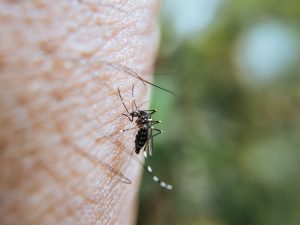Recent studies reveal that humans have passed the COVID-19 virus to wild deer over 100 times.
With a potential of these animals becoming long-term reservoirs for new viral mutations. This phenomenon could present further challenges to global health responses.
In a stunning twist in the COVID-19 saga, a study by the US Department of Agriculture’s Animal and Plant Health Inspection Service suggests that humans have transmitted the SARS-CoV-2 virus to wild white-tailed deer in the United States multiple times. This discovery has stoked fears that deer may act as long-term reservoirs for the virus, potentially enabling the emergence of new and potentially more lethal mutations.
The study, published in the journal Nature Communications, catalogues 109 incidents of human-to-deer virus transmission that occurred in late 2021 and early 2022. Remarkably, the virus continued to thrive within deer populations, circulating various coronavirus lineages such as Alpha, Delta, and Omicron even after they had seemingly disappeared from human populations.
The Deer-Human Transmission Cycle
Alarmingly, at least three instances have been identified where humans may have contracted the virus from deer. The widespread and increasing interaction between deer and humans, particularly in urban environments, could potentially fuel a vicious cycle of transmission. This places an urgent emphasis on the necessity of monitoring animal populations as part of the comprehensive COVID-19 response.
Deer have become ubiquitous in the US, their population estimated at around 30 million. Their frequent foraging in human trash or sipping from contaminated wastewater may facilitate their exposure to the virus. Additionally, humans can come into contact with deer either directly or indirectly while hunting or feeding them, or through droppings. Moreover, outdoor cats may act as a bridge between the two species, contracting the virus from deer and subsequently infecting humans.
Why Deer?
A study conducted from November 2021 to April 2022 investigated the presence of SARS-CoV-2 in free-ranging white-tailed deer across the United States. A total of 8830 samples were collected, and 944 of them tested positive for the virus.
Researchers sequenced the genomes of 391 samples and discovered that deer populations harboured multiple genetic variants of SARS-CoV-2, including Alpha, Gamma, Delta, and Omicron. They detected these variants in various states, with the Northeast region exhibiting the highest number of lineages.
The study also identified 109 independent spillover events of SARS-CoV-2 from humans to white-tailed deer, indicating frequent transmission between the two populations. The viruses in deer exhibited adaptive amino acid substitutions, suggesting rapid evolution within the deer population.
Additionally, serological analysis revealed a high seroprevalence of SARS-CoV-2 in deer, indicating ongoing outbreaks. These findings highlight the potential for SARS-CoV-2 transmission and adaptation in wildlife populations.
Can People get Covid-19 from Deer?
While our knowledge about SARS-CoV-2 in animals is still evolving, there is currently no evidence to suggest that deer or other animals significantly contribute to the transmission of the virus to humans. Current information proposes that the risk of animals, including deer, spreading SARS-CoV-2 to people is low.
However, further research is necessary to gain a comprehensive understanding of how the virus affects different animals and the potential role they may play in spreading it.
Vaccination Challenges
While vaccinations for wild animal populations can be a deterrent to disease spread, it’s a costly and logistically challenging endeavour. Currently, there’s no available vaccination that completely prevents COVID-19 transmission in animals. The extensive deer population, coupled with their widespread distribution, makes controlling the virus in these animals a daunting task.
Implications of Deer as Potential COVID-19 Reservoirs: A Call for Vigilance and Expanded Research
While the CDC asserts that the risk of catching COVID-19 from animals is low, certain groups like hunters are advised to exercise caution. The emergence of deer as potential virus reservoirs is a stark reminder of the intricate and far-reaching impacts of the pandemic. It underscores the need for vigilance, expanded research and robust surveillance strategies that encompass both human and animal populations. The new revelation certainly adds another layer to the ongoing fight against COVID-19.
References:
- USDA APHIS | Wildlife Damage. (n.d.). USDA APHIS | Wildlife Damage. https://www.aphis.usda.gov/aphis/ourfocus/wildlifedamage
- Zoonotic Diseases | One Health | CDC. (2021, July 1). Zoonotic Diseases | One Health | CDC. https://www.cdc.gov/onehealth/basics/zoonotic-diseases.html
- Feng, A., Bevins, S., Chandler, J., DeLiberto, T. J., Ghai, R., Lantz, K., Lenoch, J., Retchless, A., Shriner, S., Tang, C. Y., Tong, S. S., Torchetti, M., Uehara, A., & Wan, X. F. (2023, July 10). Transmission of SARS-CoV-2 in free-ranging white-tailed deer in the United States – Nature Communications. Nature. https://doi.org/10.1038/s41467-023-39782-x














